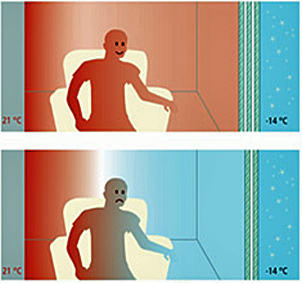Benefits of a Passive House
Energy efficiency is nothing if the building doesn’t fulfill its job of being a comfortable environment in which to live and work. But Passive Houses have more going for them than just efficiency
Comfort
The requirements of Passive House ensure a building has consistent interior surface temperatures and a stable indoor climate. Temperature swings and draughts are eliminated. However, ample fresh air is supplied at room temperature via high efficiency ventilation. At the same time, excessive moisture (that can lead to mould spores and damp patches) are extracted.
Reliability
The Passive House standard is tried and tested worldwide with tens of thousands of Passive Houses having been constructed. Hundreds of these have been continually monitored and tested with consistently positive results.
Innovation
The passive house standard requires that the designers can design a building to suit any local environment and climate. This is not a specific construction method to be followed regardless of suitability. The demands of the standard and the Client (e.g. aesthetics) are solved through the application of cutting edge design tools, construction methods and building products.
Sustainability
With so little energy required due to the fabric first approach of Passive House, the application of the standard can not only reduce greenhouse gas emissions, but also offer resiliency to the occupier as energy prices increase. A Passive House can be built with any type of material and so a cradle to cradle approach to building that utilises cellulose based materials (such as straw and fibre) is achievable.
Longevity
Structural longevity is a given in a Passive House. The high quality of building physics achieved through insulation, thermal bridge-free design and airtightness ensure that a Passive House will last.
Affordable
The initial investment costs for a Passive House are slightly higher than a conventional building due to the increased levels of planning and the requirement for superior building components. However, this pays off quickly due to the extremely low running costs and the owner is left with a higher quality building that costs significantly less to run.

